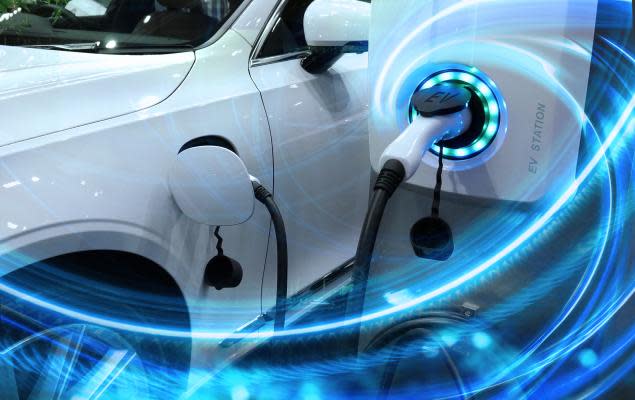Renault Nissan Mitsubishi Alliance to Break Ground in EV Space

To provide a significant impetus to transforming to a carbon-neutral business and popularizing electric vehicles (EV), the two-decade old prestigious Renault Nissan Mitsubishi Alliance between the three auto bigwigs, Renault SA RNLSY, Nissan Motor Co. NSANY and Mitsubishi Motors, the automotive subsidiary of Mitsubishi Corp. MSBHF, announced its 2030 roadmap with shared projects and actions that include the goal of launching 35 new EV models across the three brands by 2030.
The Alliance will undertake a €23-billion (nearly $26 billion) investment in the next five years, and the upcoming EVs will be majorly supported by five common platforms, namely CMF-AEV, KEI-EV, LCV-EV, CMF-EV, and CMF-BEV, with each covering a different vehicle segment in the market. The companies noted that the common platform network is set to grow from 60% to more than 80% by 2026.
By 2030, it aims for a total of 220 Gigawatt hours (GWh) battery production capacity for EVs across key production sites in the world. Renault-Nissan-Mitsubishi Alliance seeks to achieve real-scale and affordability, thus making possible battery cost reduction by 50% in 2026 and 65% by 2028. Moreover, the Alliance also shares a common goal for all-solid-state battery (“ASSB”) technology . Charging time will also be significantly reduced to one-third, enabling customers to make longer trips with increased convenience, confidence and enjoyment. The aim is to produce ASSB on a mass scale by mid-2028. Renault and Nissan will be the key players in this, with the former responsible for bringing down battery costs and the latter taking up the reins of the ASSB technology.
The Alliance is also focused on getting nearly 25 million vehicles connected to the Alliance Cloud by 2026, a sharp jump from the 3 million connected vehicles presently. Renault will be working to develop a common and centralized electrical and electronic architecture, with a first-of-kind full software-defined vehicle expected by 2025. With the pathbreaking ADAS (advanced driver-assistance systems) and autonomous drive, Alliance is constantly upgrading its intelligent vehicle and driver-assistance technologies. In this aspect, 45 Alliance models will be equipped with autonomous driving systems by 2026, with more than 10 million vehicles on the road.
There are already a few EV lineups confirmed for each brand. Mitsubishi Motors will bolster its presence in Europe by adding two new models in its range based on Renault’s best-sellers.
The Alliance willll be launching its first full software-defined vehicle by 2025. The vehicle will empower the companies to improve their cars Over The Air or OTA performance, and add value for customers by integrating their cars into their digital ecosystem. This will offer a personalized experience, enhanced services and lowered maintenance costs.
The roadmap lays down a target of delivering more than 5 million Alliance cloud systems per year by 2026 with 25 million total cars on the road. The Alliance will also enjoy a position as the first global, mass-market OEM to introduce the Google ecosystem in its cars.
The Renault-Nissan-Mitsubishi Alliance is poised for great momentum and has the potential to emerge as one of the strongest combined ventures in EV program in recent times.
Key Picks
A better-ranked player in the auto space is General Motors GM, sporting a Zacks Rank #1 (Strong Buy). You can see the complete list of today’s Zacks #1 Rank stocks here.
General Motors has an expected earnings growth rate of 2.12% for the current year. The Zacks Consensus Estimate for current-year earnings has been revised around 4.1% upward over the past 60 days.
General Motors’ earnings beat the Zacks Consensus Estimate in all of the trailing four quarters. GM pulled off a trailing four-quarter earnings surprise of 46.51%, on average. The stock has also rallied 1.5% over a year.
Want the latest recommendations from Zacks Investment Research? Today, you can download 7 Best Stocks for the Next 30 Days. Click to get this free report
Nissan Motor Co. (NSANY) : Free Stock Analysis Report
General Motors Company (GM) : Free Stock Analysis Report
RENAULT (RNLSY) : Free Stock Analysis Report
Mitsubishi Corp. (MSBHF) : Free Stock Analysis Report
To read this article on Zacks.com click here.
Zacks Investment Research

 Yahoo Finance
Yahoo Finance 